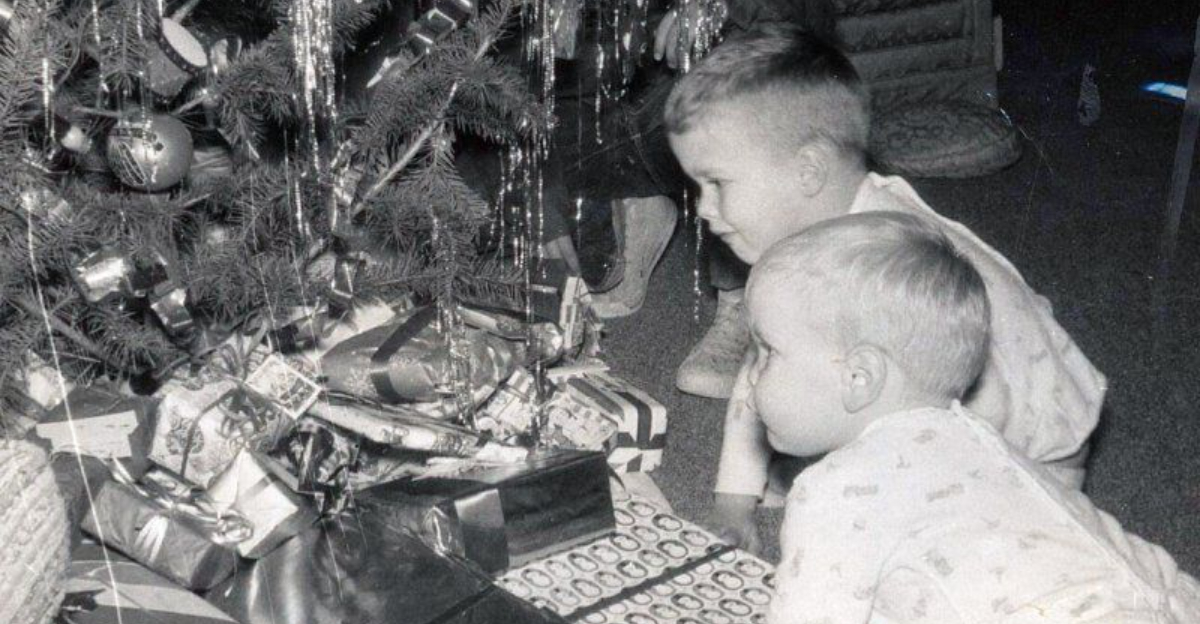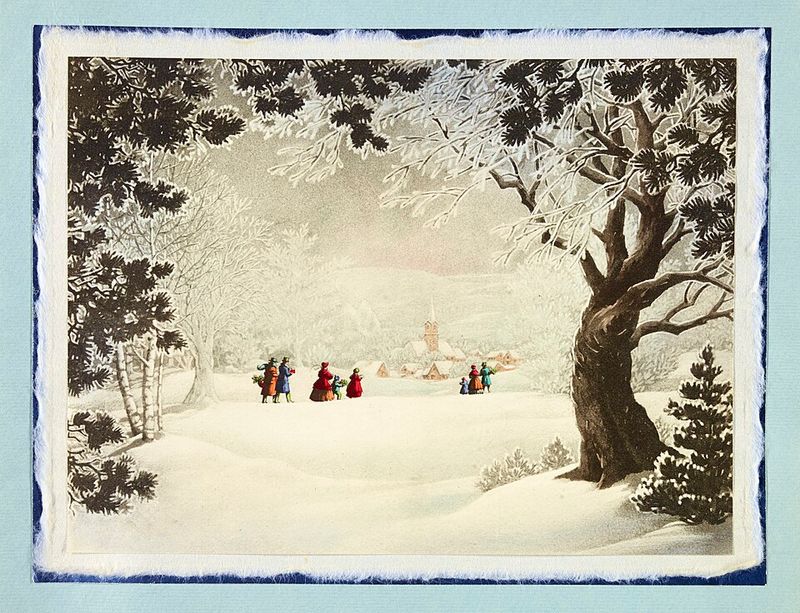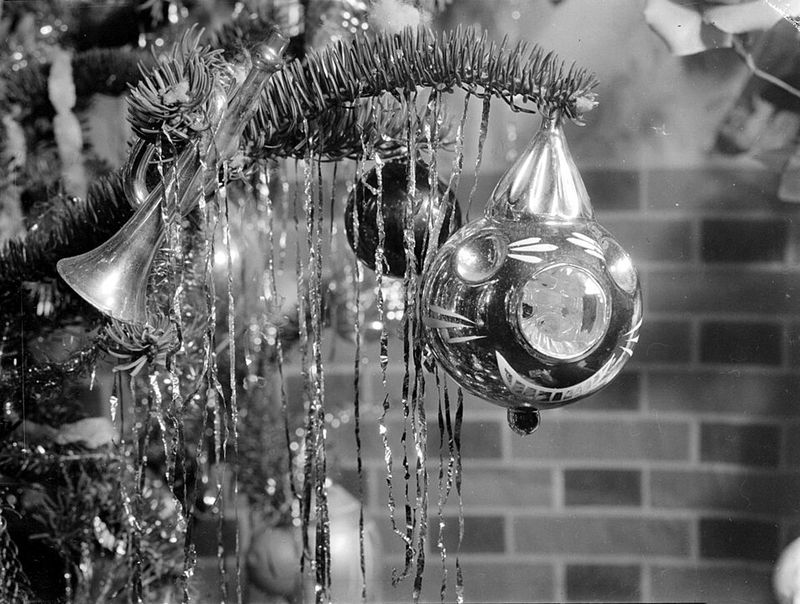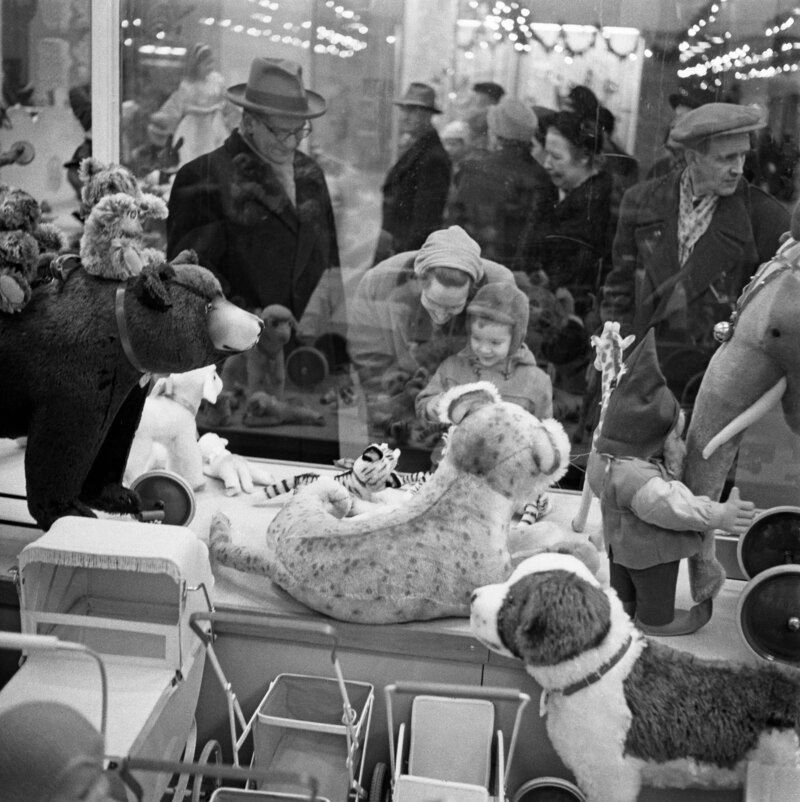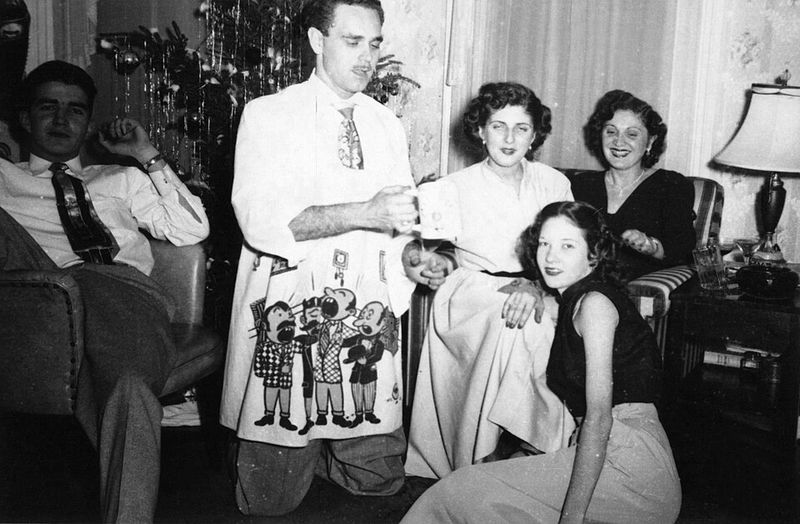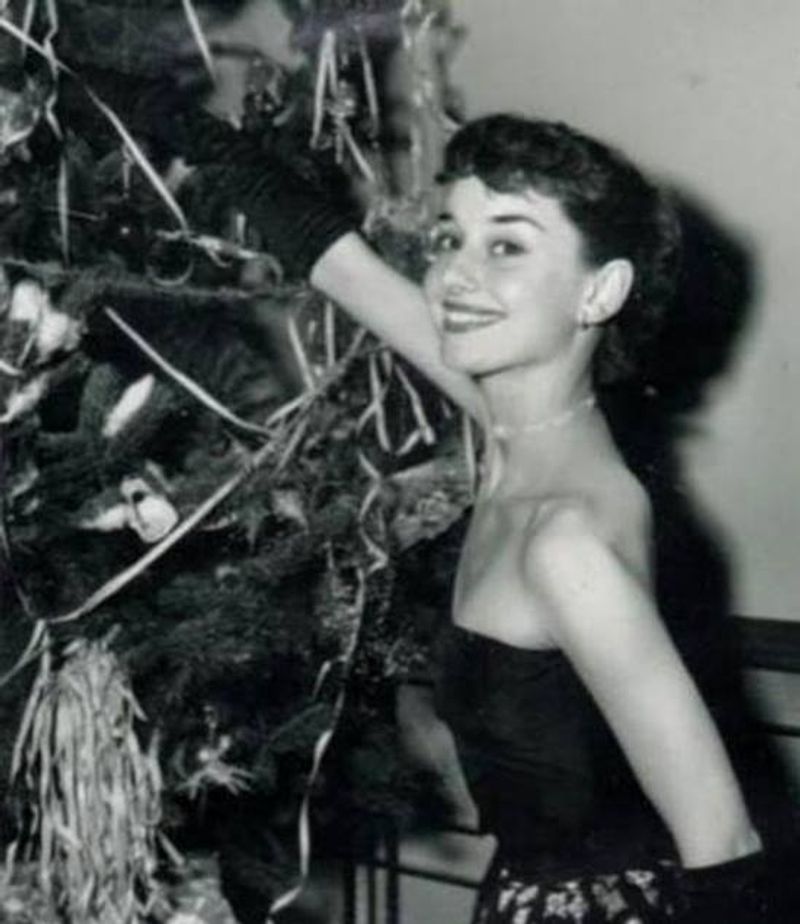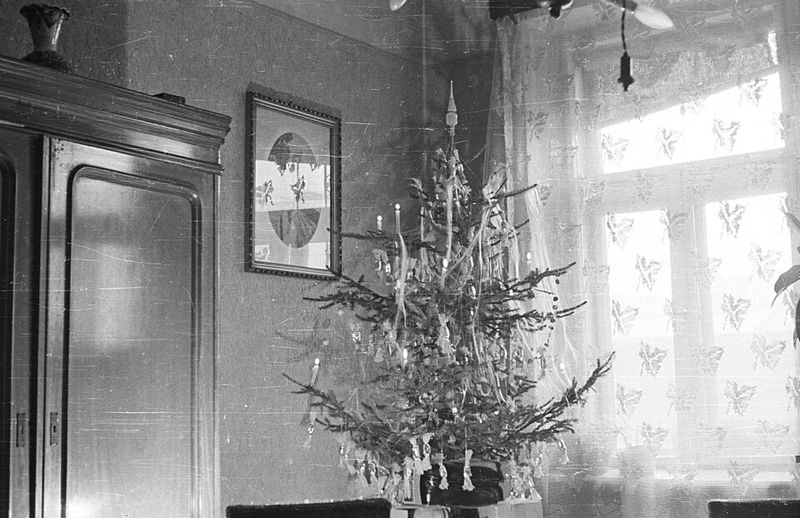The 1950s were a golden era for festive cheer – when neighborhoods shimmered with lights, families gathered around the TV for holiday specials, and the season felt a little more magical. While some customs faded with time, others deserve a full-blown comeback. Here are 13 beloved holiday traditions from the ’50s that would make the season brighter today. Ready to be inspired by cozy rituals, glittering decor, and community spirit that turned December into pure wonder?
1. Hand-Written Christmas Cards
Before digital greetings and mass emails, families spent evenings writing heartfelt holiday notes. Cards often featured glittery illustrations, embossed designs, and personal messages – a sentimental ritual that made every envelope feel special. The process invited reflection: recalling shared memories, expressing gratitude, and crafting wishes meant only for that recipient. Children addressed envelopes with care, licking stamps and learning the joy of thoughtful correspondence. Mailboxes brimmed with color, texture, and warmth, transforming delivery days into mini-celebrations. Reviving this tradition today would slow the season, rekindling connection and intention. A handwritten card still feels like a keepsake, carrying presence across distance.
2. Tinsel-Draped Christmas Trees
In the ’50s, metallic tinsel was a must-have, shimmering like fresh snow under warm lights. Whether silver strands or playful colors, tinsel transformed living rooms into sparkling showcases. Aluminum trees paired with rotating color wheels lent a magical, ever-changing glow. Families meticulously placed each strand, slowing down to savor the ritual. The gleam evoked department-store glamour, making home decor feel spectacular. Reviving tinsel – used thoughtfully – returns drama and delight to modern trees. It captures the season’s theatricality, turning a corner of the room into a stage for wonder. Shine still says celebration, especially when every sparkle tells a story.
3. Caroling Door-to-Door
Neighborhood caroling brought music to front porches and smiles to chilly streets. Families bundled up, grabbed songbooks, and harmonized beneath wreath-lit windows. The tradition fostered neighborly connection, reminding communities that celebration thrives when shared. Children learned harmony and courage, while adults rediscovered playfulness. Between houses, laughter mingled with bells and crunching snow. Hot cocoa at the end felt like a medal for bravery in the cold. Bringing caroling back would energize neighborhoods, turning sidewalks into stages and listeners into friends. In a world of earbuds, collective singing reconnects us to the beating heart of the holiday season.
4. Elaborate Window Displays
Department stores once competed to create dreamlike displays, transforming sidewalks into galleries of enchantment. Animatronic elves, glistening snow scenes, and miniature North Pole villages captivated passersby. Families planned outings to admire windows before shopping, turning errands into spectacle. Kids pressed noses to glass, weaving their own stories from moving figures and twinkling lights. Displays were free, democratic magic – art shows staged for everyone. Reviving them could reignite civic pride and seasonal imagination, luring people back downtown. When windows tell stories, communities gather. Those glittering vignettes made the city feel like a shared living room, open to wonder.
5. Themed Holiday Dances
Sock hops and school dances embraced the season with red-and-green decorations and big-band arrangements of carols. Teens twirled beneath paper snowflakes, sipping punch and writing memories into the gym floor. The music – swing, early rock ’n’ roll, crooner ballads – wrapped celebration in rhythm. Teachers chaperoned, friends swapped corsages, and countdowns to winter break felt electric. Today, thematic dances could offer screen-free joy and intergenerational playlists. Dress-up cues spark creativity; simple decor multiplies atmosphere. A well-timed slow dance turns ordinary evenings into legends. Rebooting these parties invites movement, laughter, and the thrill of showing up – together – in holiday style.
6. Homemade Ornaments
Families crafted ornaments from felt scraps, pipe cleaners, Popsicle sticks, and glitter, transforming simple materials into heirlooms. Each piece captured a memory – a child’s careful cut, a parent’s guiding hand. The tree became a scrapbook of winters past, personal and imperfect in the best way. Craft nights nurtured patience, creativity, and laughter. Today, homemade ornaments reclaim the season from perfectionism, favoring meaning over symmetry. They’re budget-friendly, eco-conscious, and endlessly customizable. A paper star can shine brighter than glass when it’s made with care. Gather supplies, set a playlist, and let the glue dry on moments that last.
7. Gathering Around the TV for Holiday Specials
Specials aired once a year, and that rarity made them events. Families rearranged furniture, popped corn, and watched together – no rewinding, no second screen, just shared anticipation. Commercial breaks sparked predictions and chatter. The living room became a theater, and the signal’s static only heightened the spell. Reviving this tradition can be simple: pick a night, silence phones, and commit to a communal watch. Scarcity makes magic; appointment viewing turns content into ceremony. Whether it’s a classic variety show or a new favorite, the memory forms in the pauses, the laughs, and the collective gasp.
8. Visiting the Real Department-Store Santa
’50s department stores didn’t just host Santa; they built entire wonderlands. Elaborate sets, helpful elves, and candy-cane tokens turned a brief meeting into a storybook chapter. Kids rehearsed wishes; parents savored the spectacle. The setting felt theatrical, yet tender – part fantasy, part family ritual. Bringing back immersive Santas invites craftsmanship and hospitality to retail again. Photo ops become experiences: music, characters, and tactile decor. The goal isn’t just a snapshot; it’s awe that lingers. When spaces embrace narrative, even a queue becomes adventure, and a whispered wish echoes longer than the season.
9. Big, Festive Family Dinners
Holiday meals unfolded slowly, with courses, conversation, and clinking china. Extended families gathered over roast turkey, molded salads, and flaky pies baked from treasured recipes. The “good” dishes emerged, signaling the meal’s importance. Stories traveled across the table, connecting generations. Reviving this tradition means planning menus that invite participation – assign side dishes, share recipes, linger between bites. It’s not about perfection, but presence: setting phones aside, topping off coffee, letting laughter stretch the evening. Simple rituals – place cards, a gratitude round – anchor the memory. A long table makes space for belonging and the flavors that carry it.
10. Holiday Car Trips to See Neighborhood Lights
Families piled into the car, thermoses steaming and blankets at the ready, to hunt for the block with the brightest glow. Without GPS, discovery was the fun – turning down unknown streets and cheering surprise displays. Children pressed faces to the glass, awarding imaginary prizes for creativity. The ride transformed neighborhoods into galleries of light. Reviving the ritual is easy: pick a route, make a playlist, and treat the journey as the destination. Encourage kids to vote on favorites or sketch what they see. Shared wonder turns traffic into togetherness, mile by sparkling mile.
11. Community Christmas Pageants
Churches, schools, and community centers staged pageants that packed halls with neighbors. Nativity scenes, choirs, and comedic skits showcased local talent and handmade costumes. Participation mattered more than polish; every role felt essential. Applause stitched communities tighter than any garland could. Restoring pageants today invites inclusivity and creativity – interfaith narratives, multicultural songs, and accessible roles. The production process becomes the celebration: rehearsals, prop-making, potluck intermissions. When a town tells a story together, the season’s meaning multiplies. A homemade stage can carry an outsized heart, spotlighting the gifts that never need wrapping.
12. Christmas Clubs at Local Banks
Christmas Club accounts helped families save gradually for December without leaning on credit. Small, steady deposits built excitement and discipline, turning budgeting into a tradition of anticipation. Banks marketed them with stamps, passbooks, and friendly reminders, making thrift feel festive. Reviving this idea – through banks or family jars – cultivates financial calm in a hectic season. Set goals in January, automate contributions, and celebrate milestones. The payoff arrives as stress-free gifting, generous giving, and freedom from post-holiday regret. Old-fashioned? Absolutely – and that’s the charm: planning as an act of care for future joy.
13. Handmade Gifts
Knitted scarves, carved toys, and jars of jam carried time and care in every stitch and stir. Handmade gifts valued meaning over price, spotlighting the giver’s skills and the recipient’s story. Creating them turned winter evenings into gentle workshops – radio humming, hands busy, hearts focused. Recipients cherished the singularity: no two exactly alike. Today, handcrafting shifts holidays away from impulse and toward intention. Choose a simple project, set realistic timelines, and wrap with notes about the process. Gifts become narratives as much as objects, warming the season long after ribbons are tossed.
